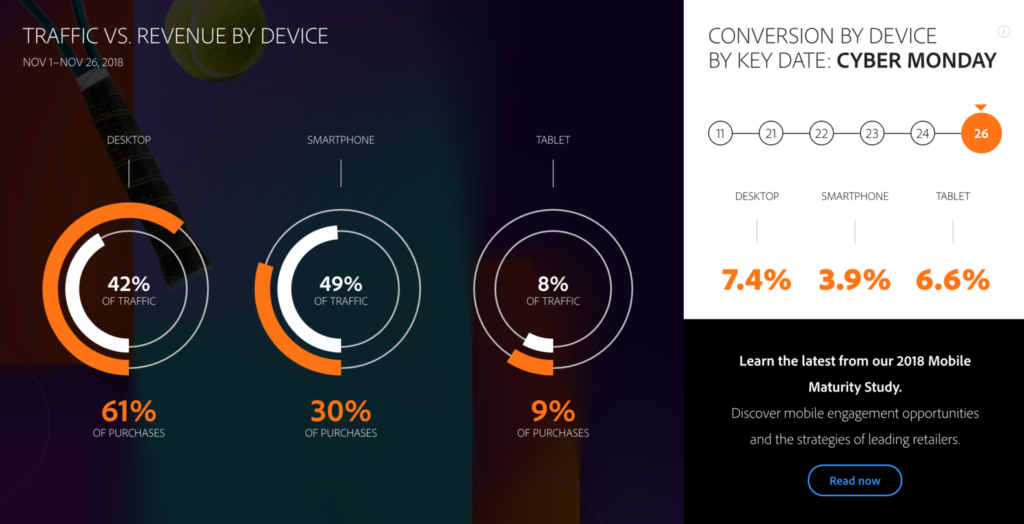
3 Shipping Scams That Are Killing Your eCommerce Profits
Many merchants have been gearing up for the holidays for months, and the time for Black Friday and Cyber Monday rushes is upon us. These merchants have to deal with many roadblocks and headaches along the way, like return scams and the like. Unfortunately, the abuse doesn’t stop at your return policy… With the holiday season in full effect, killer customers are on high alert and merchants should be too, considering record numbers for online shopping are expected this year, 166.3 million shoppers are expected to buy online just this Black Friday and Cyber Monday weekend. We teamed up with our fraud prevention partner Signifyd and the team at ShipStation to help online merchants stand clear of the 3 most common shipping scams killing eCommerce business profits this year.
1. Package Rerouting
Package rerouting commonly occurs when a customer commits payment fraud and uses a stolen credit card to make an online purchase. In most cases, the transaction is cleared because the legitimate cardholder’s address is used without being flagged. However, once the customer receives shipping confirmation and the package is en route, the original address is changed.
In another case, the customer purposely provides a false shipping address and monitors the package through the online tracking information given upon confirmation. Once they’re notified that the package is undeliverable, the customer contacts the shipping company to provide a new delivery address. Unfortunately for merchants, additional fees may occur when the package is successfully rerouted.
Lastly, a customer can make an online order and after confirmation, call the merchant to ask if their preferred shipping service can be used. Most likely, these customers have an established relationship with outside shipping services and are confident about receiving shipped items unflagged, making it harder to track and prove the package was ever delivered.
In all three cases, by the time the legitimate cardholder notices the unauthorized purchase, the scammer’s already enjoying their products free of charge. These types of fraud leave the online business with losses up to $10,000 in shipping fees, lost product, and lost profit… so now what?
Preventing Package Rerouting
Solving this issue requires a multi-step approach. First, it’s important to note not all customers have malicious agendas. In fact, many may have good reason to reroute a package. To avoid upsetting or offending legitimate customers, merchants should start with a clear shipping policy stating there’s a zero-tolerance for package rerouting on their website, social media profiles, and email confirmation.
Creating detailed shipping terms and conditions that address various errors that arise during shipping is important when dealing with customer claims. One major way to gain clarity into issues is to offer tracking. Tracking lets you know that an item has been delivered.
-Jennifer Ruben, Partner Marketing Manager, ShipSation.
In addition to providing these details, make sure a customer’s zip code and address are validated before shipping. Lastly, be sure to ship only to the original address provided in the confirmation details, especially for a large order.
2. Item Not Received
by Mike Cassidy at Signifyd
One of the most insidious shipping scams occurs when the item marked ‘not received’ actually was received. False INR claims cost retailers millions every year, but they also cost merchants their reputation. Once word’s out that a retailer tends to give in to INR claims, be it via social media, dark web forums, or even a legitimate publisher, similar claims will flood in.
The scam is popular because it’s easy. No need to commit online identity theft by stealing someone’s personal information, or hack into a customer’s retail account. All abusive customers need is the will to cheat the system without care.
To put it simply, scammers accomplish this by ordering a product, bringing the product into their homes, and then telling their credit card companies their orders never arrived. Such claims create one of the thorniest situations in the retailer/customer relationship.
If the retailer challenges an item-not-received claim and it’s legitimate, chances are the retailer just lost a customer for good. Signifyd’s consumer survey, conducted by market research firm Survata, found that nearly half of consumers will endure no more than one bad experience before abandoning a retailer for good. Let’s agree that being called a thief by a retailer counts as a bad experience.
On the other hand, if a retailer accepts the INR claim and it’s not true, the merchant is out of the goods and the revenue it would have received. You can up your fraud protection game, by adding a few things to your to-do list.
Preventing INR Claims
The first step is to make sure your return policy is clear, and that your return process is easy. You also want to be clear in your descriptions and presentations of the products you’re selling. Not only does this provide your customers with a better shopping experience, but it also reduces the possibility they’ll be unpleasantly surprised when their order arrives.
Some consumers become frustrated with the work required to return a product and decide to get a refund by claiming the product never came. Being clear about returns and the products you’re selling helps reduce the incidence of unhappy customers who suddenly feel entitled to game the system.
There are also ways to challenge an INR claim, of course. Finding photos on social media of a customer with a product they claimed they never received, for instance, is fairly strong evidence that the item was received — as is a customer’s signature accepting the order. (It happens.)
Dealing with INR claims will never be pleasant, but with some forethought, it can become much less of a chore.
3. Hijacked Shipping Accounts

Nothing’s off-limits when it comes to fraudsters, not even shipping accounts. If your company’s shipping account is online or accessible to the public, you should keep reading.
Hijacking shipping accounts is a free and undetectable way to use a stolen shipping account number to make large shipments. Once these account numbers can be accessed, they are often used in the same manner as stolen credit cards and become can punch your profits in the gut.
In less severe cases, employees use their company’s account number to ship personal packages from time to time. In the worst case, these stolen accounts are used to ship drugs, stolen goods, or fake checks long distances, sometimes across the country.
Take Montana State University for example, in 2010 the school had a $180,000 pile-up in fraudulent shipping costs after more than 9,000 consumers received fake checks. Fake checks are normally used to trick recipients into wiring money for a small fee.
Businesses of all sizes are easy targets, as their shipping bills typically aren’t monitored close enough. However, with little knowledge of who’s accessing your account, it becomes harder to track down the culprit.
Preventing Hijacked Shipping Accounts
In order to properly prevent hijacked shipping account numbers, there must be a central management system that includes these features:
- Make account numbers accessible only to specific and trustworthy employees. Remember, less is more.
- Implement a reporting system that allows these users to be able to regularly schedule pickups and track packages, without constant authorization needed.
- Monitor frequently. With a tracking system in place, data can be used to track users’ activity for cross-reference purposes.
Final Thoughts
Tracking down evidence of fraud (be it wire fraud or shipping) takes time and not many merchants want to get into the business of becoming Sherlock Holmes. However, without proper detective work, shipping scams can be a legitimate threat to merchants, their customers, their reputation, and their profits. Luckily, there are fraud-protecting and chargeback-management solutions that highly automate the INR dispute process and some also eliminate the merchant’s risk. Ask us more about INR Protection here.
Subscribe to our newsletter to ensure you never miss B2B eCommerce insights, trends, and new technology from our team. Don’t forget to follow us on Twitter, Linkedin, Instagram, and Facebook too!












Recent Comments